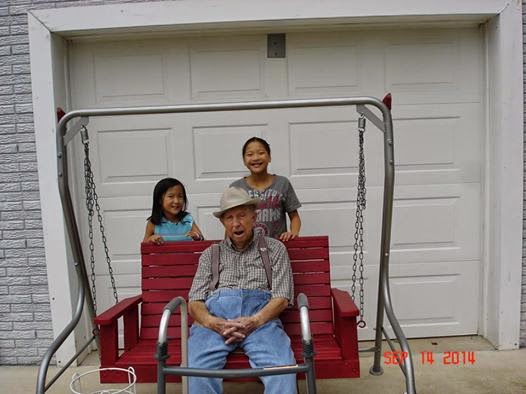Many people are familiar with orthodontics to help with straightening teeth or correcting an overbite. Hannah's had braces 2 years already and it has done wonders for straightening her top teeth. But she doesn't have an overbite. She has an underbite, officially known as "class III malocclusion". While not as common as an overbite, it's also not rare. It's more common in Asian kids and also more common in kids with cleft palates. In kids with cleft palates, the surgeries that repair the cleft palate can hinder growth of the upper jaw. So the bottom jaw grows much faster than the top jaw, creating a more severe underbite. Sometimes, it can be corrected in less invasive ways, if it's not too severe. But Hannah's has grown more severe over time and she's in the about 30% of kids with clefts who end up needing jaw surgery. Orthodontics alone can't fix it. This picture below is kind of hard to see but it shows how her top teeth are a good distance behind her bottom teeth. The goal is to get her top teeth out in front of her bottom teeth slightly. It affects not only how her smile looks, but also chewing. Having a severe underbite also can (but hasn't for Hannah) cause breathing issues at night such as sleep apnea. Over time, it also causing the bite to be off and teeth to wear down, requiring extensive dental work to correct. It's for all these reasons she's having the surgery.
When the underbite is too severe to correct with orthodontics and appliances alone, there are two main options. The first option, that was used with most kids with cleft palate until about 10 years ago, is traditional jaw surgery. The jaw is "broken" or "cut" and repositioned where it needs to be and held together during healing with plates and screws. It's a pretty brutal surgery and can't be done successfully until the child's bones are done growing (late adolescence). There's also a fairly large percentage of people whose jaws relapse over time and the distance they can move the jaw is somewhat limited still.
Since 2005, another option has been used called "Rigid External Distraction". Hannah's oral surgeon has done a lot of these, especially in recent years. It's a slower process, so the jaw can move a greater distance. The amount of relapse, while not 0%, is considerably less. It also doesn't require the bones to be done growing and is done at younger ages. So that's what Hannah is having done. And while her surgeon and orthodontist assure me it's a gentler and better process than the traditional jaw surgery, it still doesn't seem like an easy process.
First, Hannah has to have an appliance made by her orthodontist. She had impressions taken for that a few days ago. In a couple days, the orthodontist will make sure it fits correctly, and then cement it into her mouth. The appliance itself shouldn't be a major deal. But it does have hooks that stick out of her mouth. Overall, she should be able to eat and talk normally and the appliance on it's own shouldn't effect her too much. (Though we do have to be careful about the hooks sticking out).
Then, on the 17th, she is having the surgery. Her jaw will be moved forward slightly. She'll have the distraction device placed. It's a halo that attaches to her skull (pins will be tight against her skull but don't actually go inside her skull) with a bar that comes down and attaches to the hooks on the orthodontic appliance. At that time, that's all that will be done. She'll spend one night in the hospital. Here's a picture of the device from their publication materials. (Sorry for the skull picture! There are photos of actual kids with these on the internet, but I didn't want to use a picture of an actual kid I don't know and didn't have permission to use.)
She'll go home to rest for about a week. Then, we'll go to our first post-op appointment. At that time, we'll be given a special screwdriver that turns the screws on each end of the bar. I'll do that twice a day and each day I do it, it will move her upper jaw forward 1 mm. It's very slow and when her jaw moves forward, new bone grows behnd it. (It's this new bone growing that enables the jaw to be moved farther this way and also helps prevent relapse). For those familiar with Sadie's fixator on her arm, it may sound similar. The difference is with Sadie we were moving bone, but not growing new bone. With Hannah, we are both moving bone and growing new bone behind it. We'll see her oral surgeon once a week until he's decided that we're done. And then we'll see him less often as we just let everything sit and heal. He's told me she has a quite a distance to move so to be prepared for 6-8 weeks total in this process.
Then, she'll have the device taken off and return to the orthodontist for follow up. And that's "Rigid External Distraction".



























